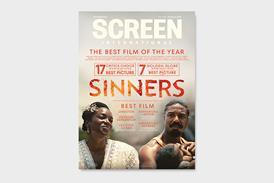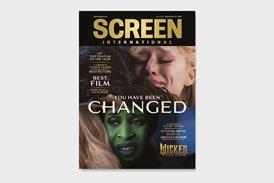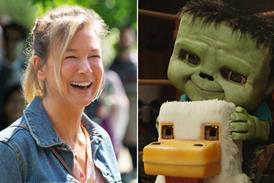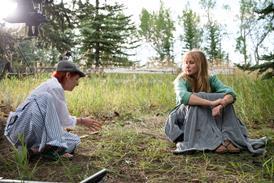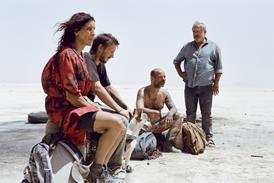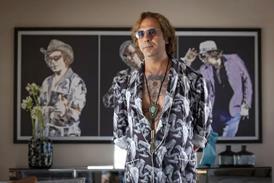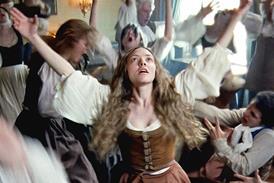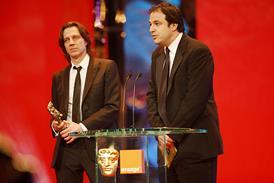The second feature from Kent Jones bows in Venice Horizons
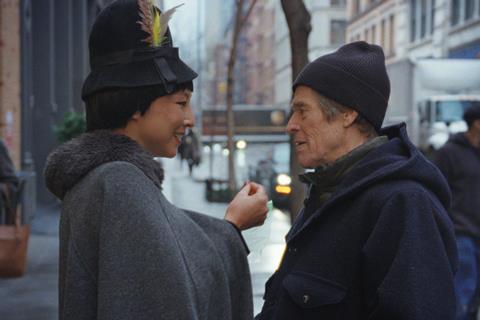
Dir: Kent Jones. USA. 2025. 96mins.
For a brief moment, swept up by the electric energy of Manhattan in the late ’70s, Ed Saxberger (Willem Dafoe) was one of the bright young things of the East Coast literary world. Then the spotlight shifted, and Ed stopped writing poetry and settled into a modest career at the post office. All of this changes when Ed is rediscovered by a group of earnest twenty-something artists and creatives. Flattered by the attention, and particularly charmed by actress Gloria (Greta Lee), Ed starts to reappraise his life. Adapted by Samy Burch from a 19th-century novella by Arthur Schnitzler and directed by Kent Jones, Late Fame is a deliciously acidic examination of the thin line between creative aspiration and pretentious poseurdom.
Perceptive, lightfooted drama
The film, which premieres in Venice Horizons before heading to New York Film Festival, is the second feature from critic-turned-filmmaker Kent Jones who previously helmed the documentary Hitchcock/Truffaut and the drama Diane. It is also screenwriter Burch’s first picture to arrive in cinemas following her Oscar-nominated breakthrough work, the darkly comic melodrama May December. (She has also co-written Dave Green’s forthcoming, much-delayed comedy Coyote Vs Acme). And it reaffirms that Burch is a notable talent with a particular knack for creating complex and contradictory female characters. It may be Ed’s story, but it’s Gloria who steals the film whenever she’s on screen, thanks to a knockout turn from Lee; awards attention may not be out of the question.
Like the work of Ira Sachs, Late Fame is not just a New York story, it’s a tale layered with multiple incarnations of the city, past and present. Scrappy, no-frills, black and white footage opens the picture, accompanied by a blast of guitars and an injection of adrenalised punk energy – this is the Manhattan that shaped Ed. The winter light of New York present is captured with a grainy, grubby quality that suggests that the grit of Ed’s early years is still just about evident. But the downtown of Meyer and his gang is more polished and moneyed; the lines and the light are crisp and clean. They live in loft apartments but rather than artistic squalor, it’s a backdrop of tasteful elegance paid for by deep-pocketed parents looking to diversify investment portfolios.
The routines in Ed’s life have worn into deep ruts over the years. A brisk series of repeated scenes – work, street, kitchen, sofa – suggests a man whose horizons have narrowed, along with his expectations. A few nights a week, he indulges in beer and billiards with his broad, bantering blue-collar co-workers. So when he arrives home one evening to the news, delivered with an almost unseemly excitement by his equally solitary neighbour, that a young man has been waiting to speak to him, Ed is initially nonplussed.
Meyer (Edmund Donovan) dresses and speaks with an anachronistic formality – he’s like a Wes Anderson character who inadvertently wandered into the real world. It later becomes clear that Meyer, like most of his tight clique of fellow artists, is a self-invented role, a performance that is superimposed over a perfectly decent and utterly unremarkable young man. But Ed is dazzled by Meyer’s toothy enthusiasm and the casual way in which he brandishes words like “genius”. Adopted into Meyer’s circle – they call themselves, adorably, The Enthusiasm Society – Ed is amused by their intense, urgent discussions of art; discussions that inevitably descend into character assassinations of a rival group, dismissed as “influencers”, that assemble at a different table in their preferred downtown drinkery.
It’s Gloria, as much as Ed’s rekindled artistic passion, who is the draw to this social circle. A little older than the boys in the Enthusiasm Society (though not as old as the “ravaged” character in Schnitzler’s novella), she’s a fabulously flamboyant creature. All divine decadence, she’s a potent cocktail of Liza Minelli in Cabaret and Barbra Streisand in What’s Up, Doc? Lee is terrific – her performance of ’Surabaya Johnny’, by Kurt Weill and Bertolt Brecht, in a grubby dive bar, is electrifying. Ed, having been around the block a few times, starts to suspect that there’s something darker under Gloria’s polished act, but he’s smitten nonetheless. She may be a phony but, to quote Truman Capote, she’s a real phony.
But Gloria is not the only one who is faking it. Ed’s attempts to reconnect with his poetic muse come to nothing; imposter syndrome gnaws at his newly inflated self worth. And he gradually realises that the enthusiasms of his friends are empty; that they are rich kid dilettantes who are seduced by a nostalgic idea of a raw downtown New York populated by starving artists. Ed’s journey in the film is more or less a circle, in that he ends up where he started. Gloria, however, is hurtling at high speed towards disaster. Or at least towards regional theatre. And if there’s one criticism of this perceptive, lightfooted drama, it’s that we don’t get to join her on the ride.
Production company: Killer Films, Fresh Fish Films
International sales: MK2 Films intlsales@mk2.com
Producers: Pamela Koffler, Mason Plotts, Christine Vachon, Danny Roberts, H.S. Naji, Jackie Langelier
Screenplay: Samy Burch
Cinematography: Wyatt Garfield
Editing: Mike Selemon
Production design: Tommaso Ortino
Music: Don Fleming
Main cast: Willem Dafoe, Greta Lee, Edmund Donovan, Clark Johnson, Luca Padovan, Michael Everett Johnson, Graham Campbell, William Hill, Arthur Langlie, Clay SingerTHIS

